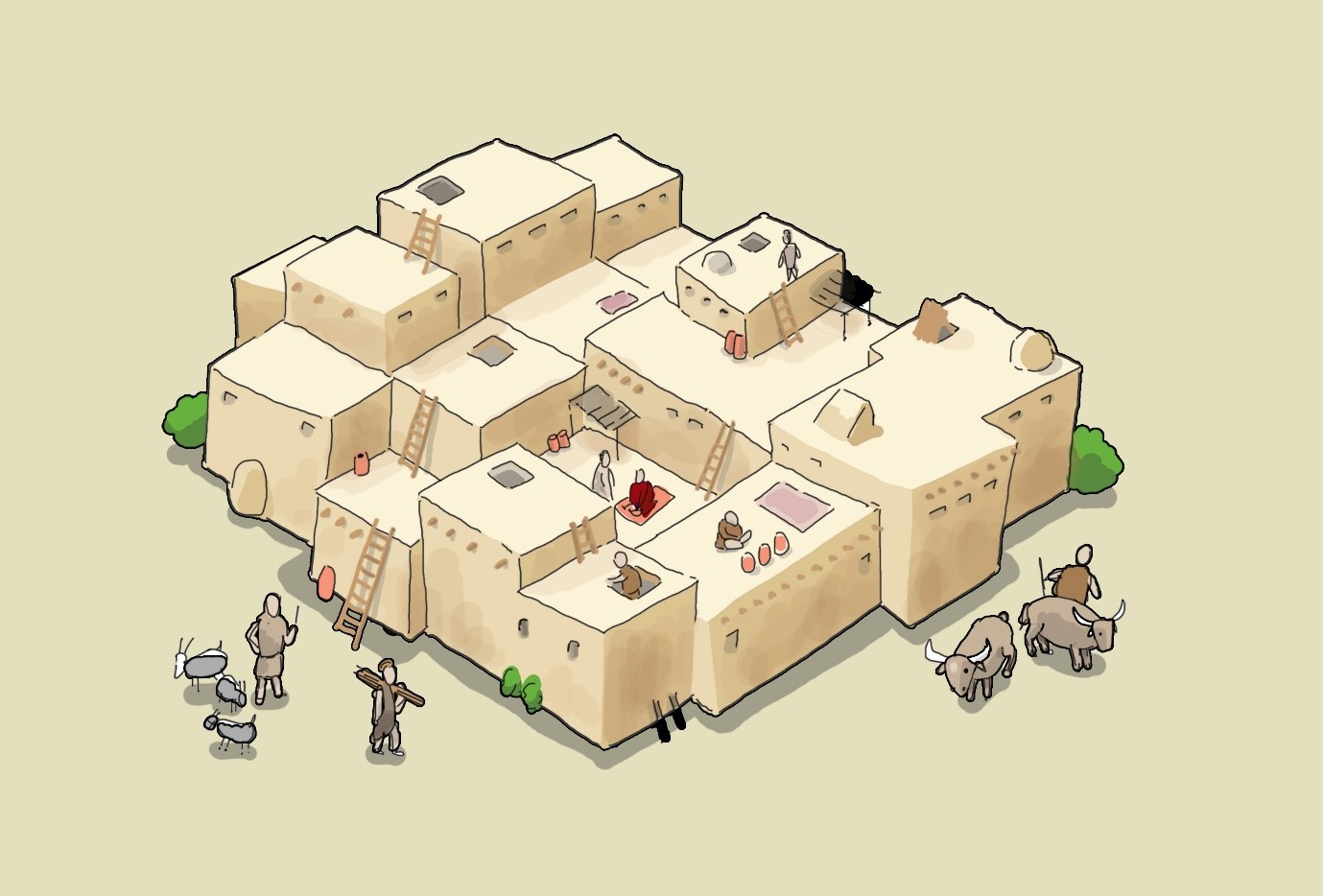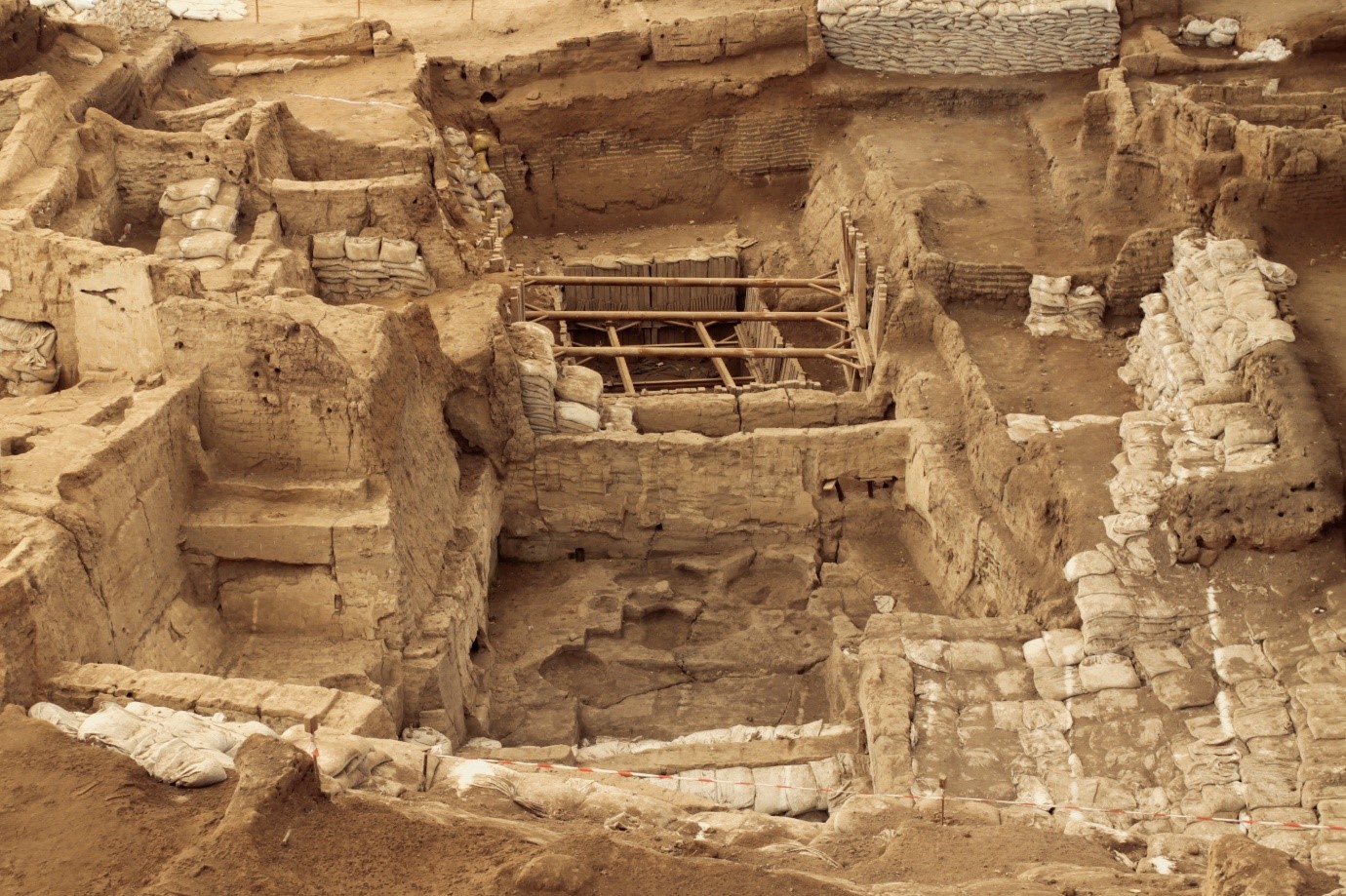
Overlooking the Konya Plain in Turkey lies the remarkable ancient city of Çatalhöyük, the largest and best-preserved Neolithic site found to date. At a time when most of the world’s people were nomadic hunter-gatherers, Çatalhöyük was a bustling town of as many as 10,000 people.
Forming a large hill atop the Southern Anatolian Plateau, the site is like a massive labyrinth of mud-brick houses, often described as a ‘honeycomb city’, made up of 18 successive layers of building representing distinct stages of the city and reflecting different eras of its history. The bottom layer is as early as 7,500 BC while the top layer dates back to 5,600 BC, a point in time in which the city was mysteriously abandoned and moved several miles away across the Carsamba Cay River to Çatalhöyük West, which appears to have been occupied for another 700 years until it too, was abandoned.
Çatalhöyük features a unique and peculiar streetless settlement of houses clustered together in a honeycomb-like maze with most accessed by holes in the ceiling, which also served as the only source of ventilation into the house. The rooftops were effectively streets and may have formed plazas where many daily activities may have taken place.

An illustration of the ‘honeycomb’ houses of Çatalhöyük. Source: emir / Adobe Stock
There are many intriguing conundrums associated with Çatalhöyük, notably: how was the sizable city organized? To date, there is not a shred of evidence for public buildings or a central authority, with the entire excavation site made up of domestic dwellings.
Wall paintings, reliefs, sculptures and other symbolic and artistic features, along with the remarkable layout of the city, testify to the evolution of social organization and cultural practices as humans adapted to a more settled life. Now listed as a UNESCO World Heritage Site, it is known as one of the best sites for understanding human prehistory.
Top image: Excavations at Çatalhöyük. Source: diana777 / Adobe Stock






